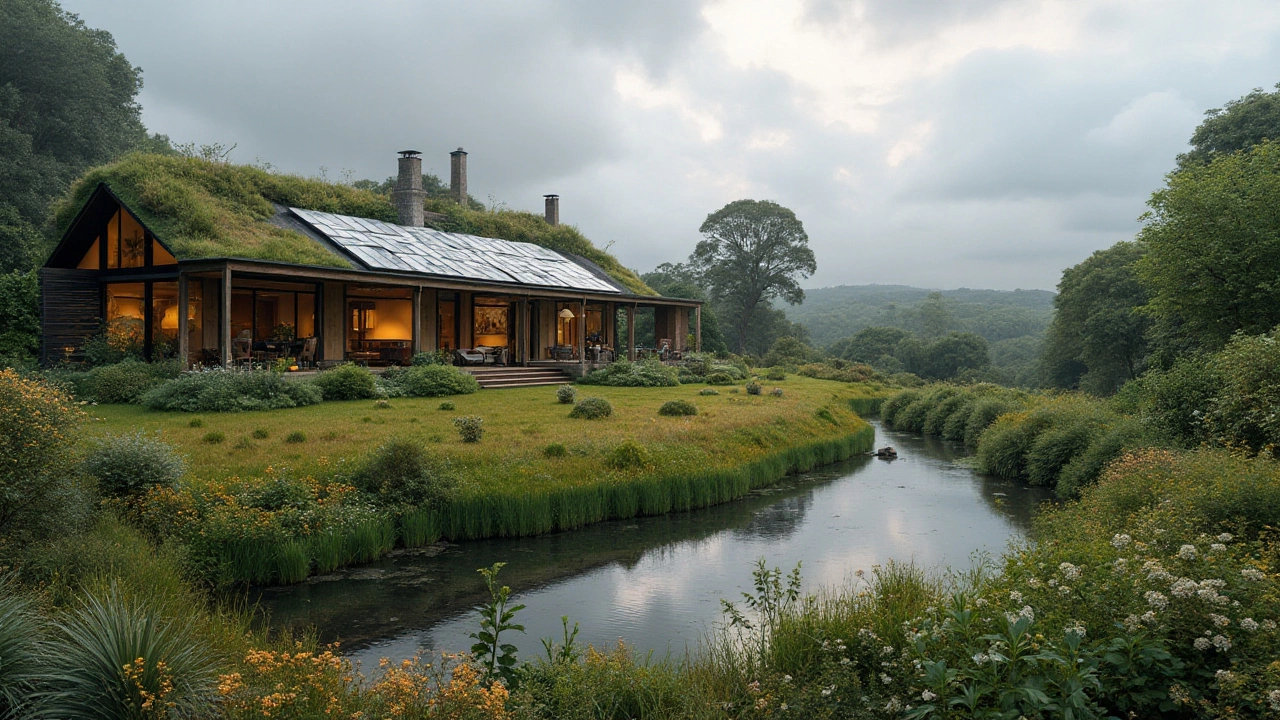Expensive Eco Houses: When Luxury Meets Green Living
Ever wonder why some people spend a fortune on homes that are also kind to the planet? It’s not just about bragging rights – it’s about having the best of both worlds: top‑level comfort and a tiny carbon footprint. In this guide we’ll break down what makes an eco house pricey, which features push the price up, and a few real‑life examples that prove green can be lavish.
Key Features of High‑End Eco Homes
First off, the cost spikes because the materials are premium and the tech is cutting‑edge. Think triple‑glazed windows, Mass‑Engineered timber frames, and insulation made from recycled sheep’s wool. Those elements keep heat in (or out) without needing massive HVAC systems.
Second, renewable energy isn’t a small solar panel on the roof. You’ll often see a full‑scale solar farm, battery storage that can run the house for days, and sometimes even geothermal heat pumps that draw warmth from the ground. The upfront price is high, but the energy bills drop to almost nothing.
Third, water conservation goes beyond a rain barrel. Luxury eco homes may have grey‑water recycling, rain‑water harvesting for toilets and gardens, and smart irrigation systems that only water when plants need it.
Finally, design matters. Large floor‑to‑ceiling windows frame stunning landscapes, while open‑plan layouts create a sense of spaciousness. High‑end eco houses often blend indoor and outdoor living, with decks, living walls, and natural stone pathways that feel like an extension of the garden.
Top Expensive Eco Houses to Inspire You
One standout is a solar‑powered mansion perched on the Cornish coast. It boasts a 30‑kilowatt solar array, a Tesla Powerwall system, and a green roof that blends into the cliffside. The interior features reclaimed oak flooring and a living wall that actually cleans the air.
In the Cotswolds, a timber‑frame cottage sells for over £1.2 million. It uses locally sourced oak, hempcrete walls for insulation, and a geothermal heat pump that provides heating and cooling. The garden is designed with native plants, reducing the need for pesticides.
If you prefer something smaller but still luxe, check out a high‑end yurt resort in the Scottish Highlands. Each yurt has a double‑wall structure, solar panels, and a composting toilet. Guests enjoy hot tubs fed by a tiny hydro‑electric system that runs off a nearby stream.
Another example is an off‑grid eco villa in the Lake District. It combines a straw‑bale construction with a micro‑hydro turbine in the lake, delivering enough electricity for the whole house. Inside, reclaimed glass bottles are used as decorative lighting fixtures.
These properties show that the price tag isn’t just for size – it’s for sustainable technology, premium craftsmanship, and a design that respects the surrounding nature. If you’re thinking about investing in an eco house, start by deciding which green features matter most to you. Do you need solar power, a green roof, or maybe a water‑recycling system? Knowing your priorities helps you balance cost and sustainability.
Remember, the most expensive eco houses aren’t just homes – they’re statements. They say you care about comfort, style, and the planet. Whether you’re buying, renting, or just day‑dreaming, the ideas here can give you a solid picture of what high‑end green living looks like today.
Exploring the Most Expensive Eco-Friendly Homes
Delve into the luxurious world of eco-friendly homes, discovering what makes these sustainable dwellings so costly yet environmentally conscious. Learn about the materials, technologies, and innovations that help reduce ecological footprints while offering luxury living. From smart energy systems to sustainable sourcing, explore how these homes set trends in luxury green living. Find tips on how to incorporate eco-friendly practices into any home, regardless of budget.
- Oct, 14 2024
- 0 Comments
